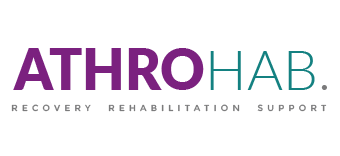The Brace Guide from Athrohab – Part 1
This is the first in a series of posts where we will explain how injuries happen, how they are treated and do braces work?
When you have been injured it is important to find out the underlying cause. This way you can prevent the same injury from occurring again. So it’s vital to seek medical attention if the injury does not improve within a few days.
Braces have many positive effects after an injury, they provide support and pain relief without side effects and can be used long after the injury has healed for protection and to retain stability.
Braces do not make muscles and joints weaker, on the contrary, you can continue to be active because of the positive effect of a brace.
This is the best way to prevent muscles and joints from becoming weaker! Keeping your body active is important to prevent many of today’s orthopaedic injuries.
What happens when you injure yourself?
For example, twisting your ankle while taking a walk can be easily done. Unfortunately it’s not always immediately that you realize what’s happened. It’s a couple of hours later when the ankle is swollen and you have pain that you know that something serious has happened. Then it’s too late to reduce the effects of the injury. The bleeding has caused swelling which produces the pain and reduces the range of motion in the joint. Correct acute care can reduce the time for recovery significantly.
Acute and Overload injuries
Injuries can be divided into acute and overload injuries, depending on the cause.
Acute injuries happen suddenly and have a clear cause. External factors like other players, equipment and different surfaces can contribute. The acute injury often leads to bleeding in a muscle or tendon. The bleeding causes the swelling and bruising that can be seen after a few hours. The swelling causes pain and reduces the normal range of motion in the joint. A normal ankle sprain takes between 6-8 weeks to heal. Correct acute care is therefore very important
A compression bandage should be applied immediately after a sprain to stop the bleeding. It is similar to having an open wound, only no blood is visible. Every minute without a compression bandage increases the swelling through the bleeding. The compression bandage should be applied tightly without causing too much discomfort. Always check for circulation below the bandage after application. It should be kept in place a minimum of 30 minutes, preferably longer. After that it can be loosened but it should be worn for at least the first two days to prevent further swelling.
Elevation is not that important during the first two days as most of the fluid that contributes to the swelling is still outside the blood vessels and therefore not affected by elevation. Elevation is very effective later in the injury phase since it reduces swelling.
The cooling effect is controversial. An instant ice-pack does not have enough of a cooling effect to affect the bleeding significantly, however cooling works excellent when combined with compression. Pain relief and reduction of the swelling are then achieved. If possible it’s a good idea to offload the injured area, preferably with a crutch. This reduces the load on the ankle or knee significantly and enables a normal gait which could help to further reduce the swelling.
If you can’t put weight on the joint at all, seek acute medical attention. There is a risk that you have a fracture that will require professional medical care.
Overload Injuries occur gradually without a single incident. High intensity, prolonged loading and unbalanced training can lead to overloading of parts of the body.
Recovery and rest are as essential to the body as activity. The risk of getting an injury will increase dramatically without proper time to recover. Several different factors often interact when you have an overload injury. The most common factors are too quickly increasing training, muscular imbalances, deformities, different surfaces and shoes.




